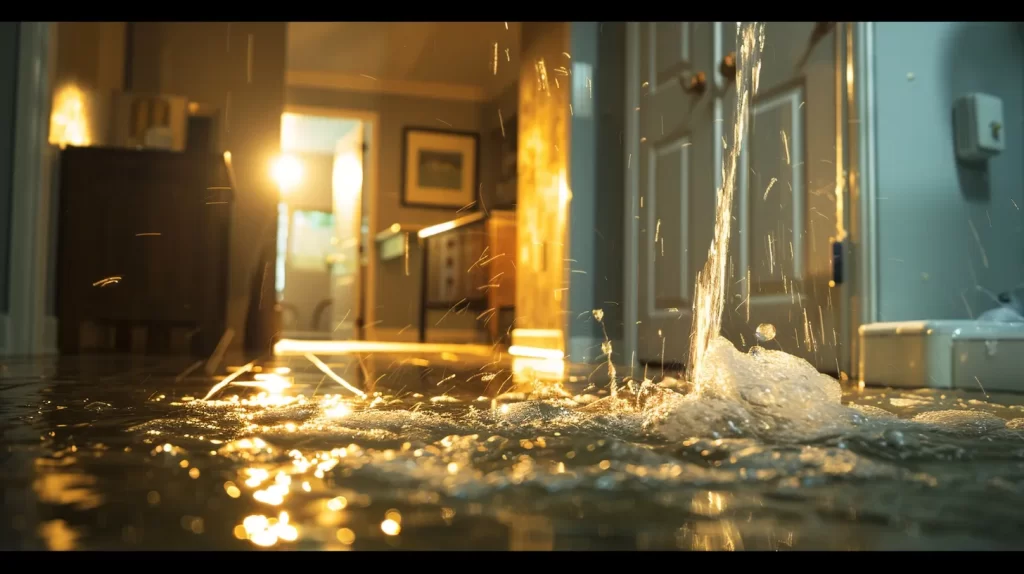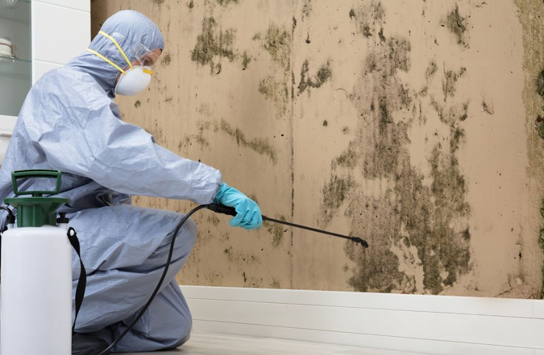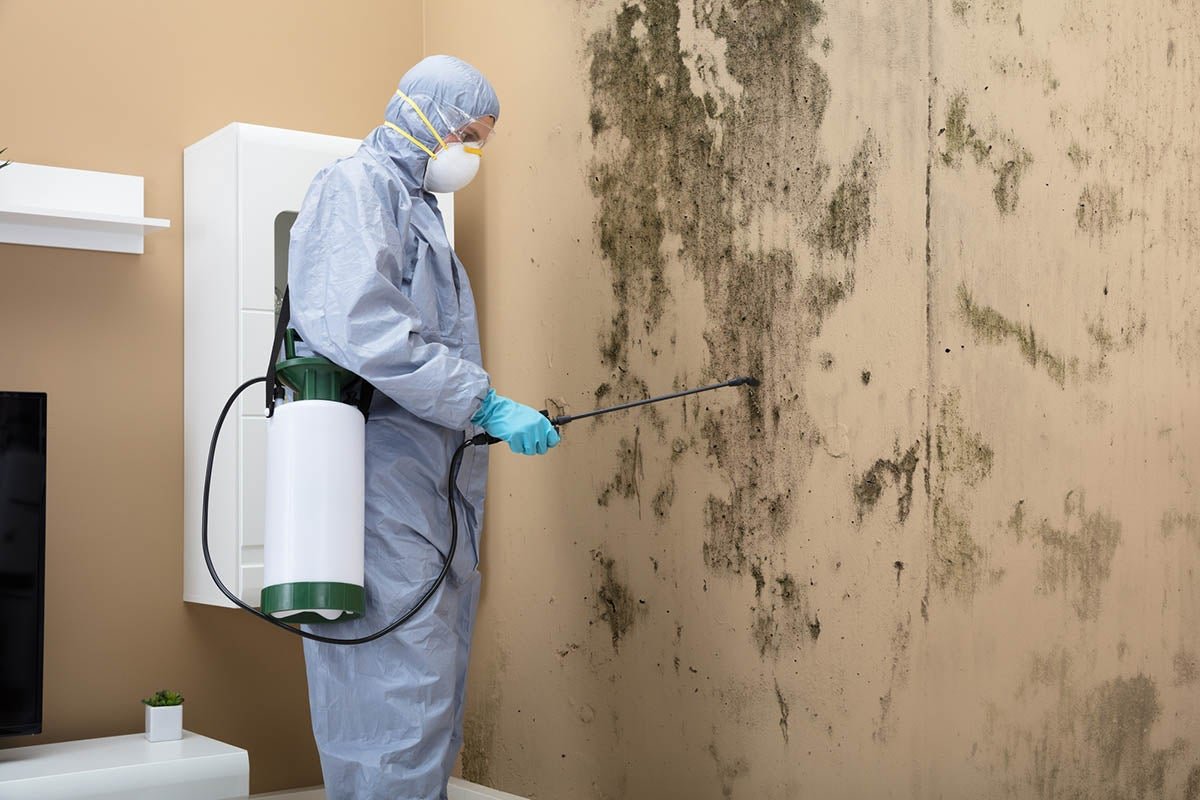Introduction
Older homes in Palm Beach County exude charm, with their historic architecture and unique character, but they also come with hidden risks—especially water damage. Built before modern waterproofing standards, many homes from the pre-1980s era face issues from aging plumbing, outdated roofing, and poor ventilation. Hidden water damage, often lurking behind walls or under floors, can lead to costly repairs, mold growth, and structural issues if not addressed early. In West Palm Beach’s humid climate, where moisture thrives, these problems can escalate quickly.

At Edwards Property Remediation, we specialize in detecting and resolving hidden water damage in older Palm Beach homes. This comprehensive guide outlines seven key signs of hidden water damage, explains why older homes are particularly vulnerable, and provides actionable steps to protect your property. If you suspect water damage, don’t wait—call us at (754) 221-6945 for a free moisture inspection.
Why Older Palm Beach Homes Are More Vulnerable
Homes built before the 1980s in Palm Beach County face unique challenges that make them susceptible to hidden water damage:
- Aging Plumbing Systems: Galvanized steel or copper pipes, common in older homes, corrode over time, leading to leaks or bursts.
- Outdated Roofing Materials: Older roofs, often made with less durable materials, are prone to leaks during Florida’s frequent storms.
- Cracked Foundations: Settling or shifting foundations can allow water to seep into basements or crawlspaces.
- Poor Ventilation: Inadequate airflow in attics, bathrooms, or crawlspaces traps moisture, fostering mold growth.
- Previous Unreported Issues: Past leaks or floods, especially if poorly addressed, can leave lingering moisture that goes unnoticed.
- Limited Waterproofing: Older construction often lacks modern moisture barriers or drainage systems, increasing vulnerability.
In West Palm Beach, where humidity averages 60–80% and heavy rains are common during hurricane season (June–November), these factors create a perfect storm for hidden water damage. Even a small, undetected leak can cause thousands in repairs if it leads to mold or structural decay.
7 Signs of Hidden Water Damage to Watch For
Hidden water damage often goes unnoticed until it becomes a major problem. Here are seven warning signs to look for in your older Palm Beach home:
1. Discolored Walls or Ceilings
Brown, yellow, or reddish stains on walls or ceilings are a telltale sign of water infiltration. These stains often appear near ceilings, around window frames, or in corners where water from leaks or roof damage collects. In older homes, stains may indicate chronic issues from aging pipes or roofing.
What to Check: Look for discoloration that spreads over time or appears after heavy rain. Even faint stains can signal a larger problem behind the surface.
2. Musty or Damp Odors
A persistent musty or “earthy” smell, especially in bathrooms, closets, basements, or attics, suggests trapped moisture. This odor is often the first clue of hidden water damage, as mold or mildew may be growing in areas you can’t see, like behind walls or under flooring.
What to Check: Pay attention to enclosed spaces with poor ventilation, such as under sinks or in storage areas, where dampness lingers.
3. Peeling Paint or Bubbling Wallpaper
Moisture trapped behind walls causes paint to peel or wallpaper to bubble and warp. In older Palm Beach homes, this is common near bathrooms, kitchens, or exterior walls where leaks or poor sealing allow water to infiltrate.
What to Check: Look for bubbling or cracking paint, especially in areas exposed to moisture, like near windows or plumbing fixtures.
4. Warped Floors or Baseboards
Water damage can cause wood or laminate flooring to cup, buckle, or feel soft underfoot. Vinyl flooring may loosen at the edges, and baseboards can swell or separate from walls. In older homes, subfloors made of wood or particleboard are particularly susceptible to water retention.
What to Check: Inspect floors for unevenness or soft spots, especially near bathrooms, kitchens, or laundry areas. Check baseboards for swelling or discoloration.
5. Increased Water Bills
A sudden, unexplained spike in your water bill could indicate a hidden leak in your plumbing system. Older homes often have corroded pipes or loose fittings that leak slowly, allowing water to seep into walls or floors without immediate detection.
What to Check: Compare recent water bills to past usage. A consistent increase, even without changes in household habits, warrants investigation.
6. Cracks in the Foundation or Drywall
Water can weaken structural components, causing visible cracks in foundations, drywall, or plaster. In older Palm Beach homes, settling foundations or shifting soil due to heavy rains can exacerbate water infiltration, leading to structural damage.
What to Check: Look for hairline cracks near windows, doors, or corners, as well as larger cracks in basement or crawlspace walls.
7. Visible Mold in Isolated Areas
Small patches of mold in corners, behind furniture, under sinks, or near vents are a red flag for hidden water damage. Mold thrives in Florida’s humid climate and often signals a nearby moisture source, such as a slow leak or poor drainage.
What to Check: Inspect hidden areas like behind appliances, inside cabinets, or in attics for black, green, or white mold growth.
The Risks of Ignoring Hidden Water Damage
Failing to address hidden water damage in older Palm Beach homes can lead to serious consequences:
- Mold Growth: Mold can develop within 24–48 hours in Florida’s humidity, causing health issues like allergies, asthma, or respiratory problems.
- Structural Damage: Prolonged moisture weakens wood beams, subfloors, and foundations, requiring costly repairs.
- Increased Repair Costs: A small leak can escalate into thousands of dollars in damage if not caught early.
- Insurance Complications: Insurers may deny claims for mold or structural damage if it results from unreported leaks.
- Reduced Property Value: Unresolved water damage can deter buyers and lower your home’s marketability.
Early detection is key to preventing these issues and protecting your investment.
What to Do if You Suspect Hidden Water Damage
If you notice any of the above signs, take immediate action to prevent further damage:
- Don’t Ignore the Signs: Even minor indicators like a musty smell or slight discoloration can point to a larger issue. Delaying action allows damage to spread, increasing costs and risks.
- Schedule a Professional Moisture Inspection: At Edwards Property Remediation, we use advanced tools to detect hidden water:
- Infrared Cameras: Identify moisture behind walls, ceilings, and floors without invasive demolition.
- Moisture Meters: Measure saturation levels in materials to pinpoint affected areas.
- Air Quality Testing: Detect elevated mold spore levels in the air, indicating hidden growth.
- Fix the Source: Identify and repair the cause of the water damage, whether it’s a leaking pipe, cracked roof, or poor drainage. Our team can recommend trusted contractors or handle repairs directly.
- Dry Out the Area: We deploy industrial-grade air movers, dehumidifiers, and injectidry systems to thoroughly dry affected areas, preventing mold and further deterioration.
- Restore & Prevent Future Damage: After drying, we replace damaged drywall, flooring, or other materials, restoring your home to its pre-damage condition. We also provide recommendations, such as improved ventilation or smart leak detectors, to prevent recurrence.
✅ Tip: Act within 24 hours of noticing signs to minimize damage. Call Edwards Property Remediation at (754) 221-6945 for a free inspection.
Why Older Homes Need Professional Attention
Older Palm Beach homes require specialized care due to their construction and environmental challenges:
- Complex Plumbing Systems: Galvanized or copper pipes are prone to corrosion, requiring expert assessment.
- Historic Materials: Older homes may contain asbestos or lead-based paint, necessitating careful handling during repairs.
- Hidden Damage: Water can travel through intricate structures, making non-invasive detection tools like infrared cameras essential.
- Florida’s Climate: High humidity and frequent storms amplify the need for thorough drying and mold prevention.
At Edwards Property Remediation, our IICRC-certified technicians are trained to handle the unique needs of older homes, ensuring safe and effective restoration.
Case Study: Hidden Water Damage in a 1960s Palm Beach Home
A homeowner in a 1960s-era Palm Beach home noticed a musty smell and slight bubbling in their kitchen wallpaper. Suspecting a leak, they called Edwards Property Remediation. Our process:
- Inspection: Infrared cameras revealed moisture behind the kitchen wall from a slow leak in an old copper pipe.
- Moisture Mapping: Confirmed water had spread to the subfloor and adjacent drywall.
- Mitigation: Removed standing water, dried the area with dehumidifiers, and applied antimicrobial treatments to prevent mold.
- Restoration: Repaired the pipe, replaced damaged drywall and flooring, and installed a dehumidifier to control humidity.
- Outcome: The home was restored in four days, with no mold growth and full insurance coverage due to our detailed documentation.
This case highlights the importance of addressing hidden damage early to avoid escalation.
Why Homeowners Trust Edwards Property Remediation
Edwards Property Remediation is West Palm Beach’s go-to choice for hidden water damage:
- Locally Owned and Operated: We understand Palm Beach County’s unique climate and construction challenges.
- Non-Invasive Technology: Our infrared cameras and moisture meters detect damage without unnecessary demolition.
- Insurance Expertise: We provide Xactimate estimates and detailed reports to streamline claims.
- Fully Licensed & Insured: Our IICRC-certified team follows industry standards for safe, effective restoration.
- 5-Star Rated: Check our Facebook page for glowing reviews from Palm Beach homeowners.
Tips for Preventing Hidden Water Damage
- Inspect Annually: Check plumbing, roofing, and foundations for wear or leaks.
- Improve Ventilation: Use exhaust fans in bathrooms and kitchens to reduce humidity.
- Monitor Water Bills: Watch for unexplained increases that may indicate leaks.
- Install Leak Detectors: Smart sensors can alert you to water issues instantly.
- Maintain HVAC Systems: Clean condensate lines to prevent clogs and overflows.
Navigating Insurance for Hidden Water Damage
Many homeowners’ policies cover sudden water damage, but gradual leaks may be excluded. Edwards Property Remediation works with insurers to document damage and ensure coverage, providing photos, moisture readings, and Xactimate estimates.
Health Risks of Hidden Water Damage
Hidden water damage can lead to mold, which causes:
- Allergies (sneezing, itchy eyes, rashes).
- Respiratory issues (coughing, asthma exacerbation).
- Potential infections or toxicity in severe cases.
Early detection and remediation eliminate these risks, protecting your household.
Conclusion
Older Palm Beach homes are treasures, but their age and South Florida’s climate make them prime targets for hidden water damage. By recognizing signs like discolored walls, musty odors, or warped floors, you can catch issues early and avoid costly repairs. Edwards Property Remediation offers expert moisture inspections and comprehensive restoration to protect your home’s value and safety. Don’t let hidden damage become a nightmare—act now to safeguard your property.
📞 Call Edwards Property Remediation at (754) 221-6945 for a Free Moisture Check 📧 Email info@eprllc.net 🌐 Visit www.eprllc.net/property-managers 👉 Follow us on Facebook for tips and updates




